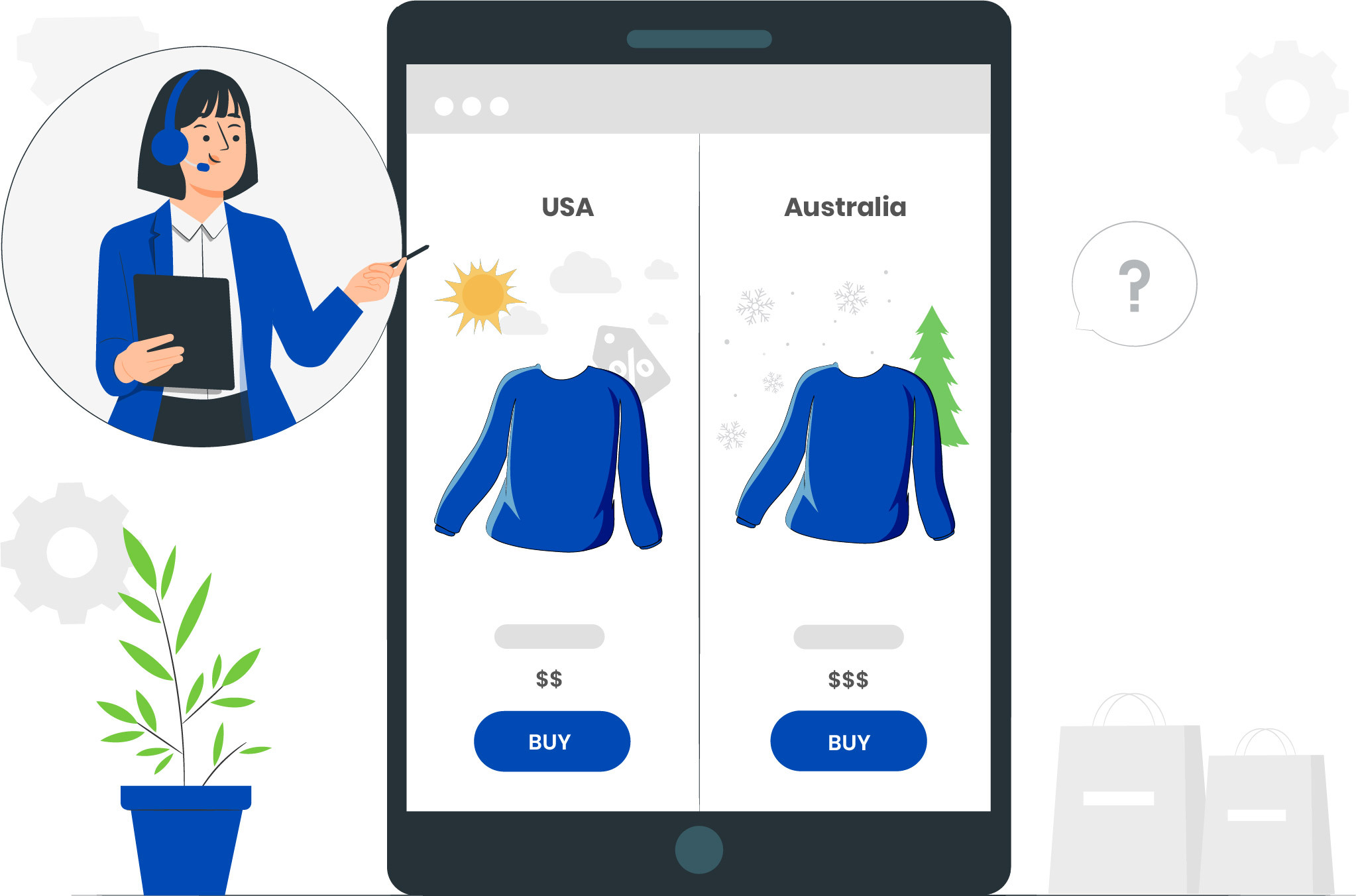
What is Seasonality?
Not every product which is stocked in the warehouse sells at the same rate throughout the year. Sales for certain products increase or fall due to various factors. Some of these factors are constant throughout the life cycle of the product. This, in simple terms can be called as seasonality of the product.
Seasonality is defined as changes in sales based on a particular season. It is a market characteristic in which a product’s sales grow much more for a period of a few days, weeks or months each year and then drop off considerably in the other period. They comprise periodic, repetitive, and regular patterns that the seller is aware off.
Understanding the seasonality of any product is most important aspect in developing the procurement plans in a better manner.
When the product sales are going to increase, considering the seasonality, it is important for the seller to have enough stock of the product to ensure that there is no potential revenue loss due to out-of-stock situations.
On the other hand, towards the end of seasonality, it is important that the procurement is planned such that there is no overstock situation and any new orders are then placed considering the same.
Broad Categorization of Product Seasonality:
Any product’s seasonality can broadly be classified into below 2 categories –
- Natural Seasonality: Natural Seasonality is caused by natural factors such as changing weather and climate across different regions (Spring, Summer, Winter, Autumn, Rainy, etc.).
These are macro factors that affect all the products at large. A product may be a seasonal product that is useful in specific weather but not in another like the demand for umbrellas will be higher in a rainy season. To learn more about how to forecast the demand and plan procurement for products affected by Natural Seasonality, you can read our blog on “Effects of Natural Seasonality on a Product”.
- Event-based Seasonality: Event-based seasonality, as it says, occurs due to special events (like Prime Day, Black Friday), festivals (like Christmas, Diwali), holidays (like New Year, Chinese Ney Year). People tend to celebrate the New Year or different festivals by spending and generally there are discounts during special events hence companies experience a higher number of sales during these periods compared to other periods during the year.
Let’s take the example of sale of cars in 4 different countries namely India, the USA, Japan, and China–

The predicted pattern or Season in the sales of vehicles is that during the festival and discount season the sales are the highest in almost all of these countries.
The discount season shows the most sales in all the countries, as people tend to buy cars during either financial year-end or during the discount seasons.
India, USA, and Japan generally observe an increase in the sales in their respective festival /discount seasons. While, China has its festival in February, the sales of vehicles are lower during this month which comes just after its discount season hence generally, there is a decline in the sales during February in China.
- Event-based Seasonality:
Events are generally planned considering the consumed purchase pattern. These patterns can further be classified as under –
- Daily Seasonality:
Daily seasonality refers to the days in a week when demand for certain products/services is high. Daily seasonality helps in short-term planning and forecasting for a business.
For example, research from gallup.com found that people tend to spend more on weekends. This spending usually includes food items, clothes, and other daily needs.

Another example of daily seasonality is the operations of fast-food chains like dominos pizza. The sale of pizza increases on weekends hence, it becomes important that the forecasts for the weekends are accordingly increased and the raw materials procurement is then increased for the weekends. It needs to be ensured that required raw material reaches the store before the weekend begins so as to avoid any shortage of materials during rush hours.
- Weekly Seasonality:
Weekly seasonality is similar to that of daily seasonality but the forecasts are adjusted according to the trends for every week instead of day. Generally, people tend to spend more during the first week of the months as compared to the rest of the weeks since the pay checks are received during the first week of a month. Accordingly, forecast for 1st week should be higher for such products which are to be affected.
Seller run different deals, promotions, etc. during certain week of a different months in order to attract more customers. Some common examples of weekly seasonality are the special discount periods like Black Friday, Amazon Prime Day, Cyber Monday, etc. Product salesgenerally tend to increase during these periods since seller offer high discounts on most of their products.
Thus, it becomes very important to adjust the forecasts considering these fluctuations that happen due to these special events. Procurement planning needs to be done such that that there is enough stock before these events/weeks begin.
All strategical decisions should be taken like whether to do air-shipment, sending stock to Amazon, etc. considering the relevant lead time. For instance, we should send stock to Amazon for Black Friday considering taken to send the goods to Amazon and receiving time, some natural delay and some buffer. Since you cannot afford to have stock outs due to non-replenishment, this is a very important decision.
- Monthly Seasonality:
Monthly seasonality is referred to the events or seasons that are predictable and follows a recurring pattern that affects the demand and sales of a product/service same month/s every year. Monthly seasonality is considered while forecasting for the long term.
The monthly seasonality is mostly holiday seasons when the sale of commodities is the highest and customers tend to spend more. The holiday months vary as per the geographic location.
To understand this further, let’s consider a scenario in which a new airline company plans to forecast the frequency of the flights and the pricing for flights that will be flying to the 4 different countries India, the USA, Saudi Arabia, and China. To forecast this, the company will need previous data on the number of tourists that have arrived in these countries and analyze the same for each month.

It can be observed from the data that, India experiences high international arrivals in August and December while Saudi Arabia has the highest number of tourist arrivals in January and September. USA sees the maximum international tourist arrival in August and December while China has the highest number of foreign tourist arrivals in April and October.
This can now be considered as monthly seasonality for these countries the airline can accordingly plan the flights and prices during these months across the different countries.
- Yearly Seasonality:
Yearly seasonality is referred to as the changes in sales of a particular product year-on-year. These changes may be due to different circumstances, natural phenomena, or the introduction of similar products in the market during the year.
For instance, during the outbreak of Covid 19, the sales of some products increased while there was a sharp decline in the sales of many commodities. Another example of yearly seasonality is the decreasing sales of combustion engine vehicles year over year due to the introduction of Electric Vehicles.
Given below is the representation of the yearly seasonality, the graph shows the revenue generated (in billions) by Fast Moving Consumer Goods over the years. This accounts for the year-on-year increase in spending on FMCG goods.

It becomes important to consider these circumstances while forecasting since the forecasts will have to accordingly adjusted in order to reflect the probable effect on sales. For e.g. post Covid forecasts for product sales affected by Covid outbreak will have to be adjusted such that the effect of decrease in sales in the covid years are neglected.
The procurement for material would also be required to be adjusted considering the same and it would be important that planning is done with more accuracy and considering the further possible scenarios as well.
What we do?
Most of the times the past sales data are clearly evident of the seasonality for any products. Based on the deviation from the average sales for the period one can easily identify the top selling as well low selling periods. Once this is identified, we then adjust the forecasts for the similar period to reflect the increase or decrease in sales. Further procurement planning is then revised in order to reflect the most recent updated forecasts.
Identifying seasonality for new products is comparatively harder since there is no clearly available sales trend. For such products, we refer to seasonality of the similar products which the seller sells or of the category the product belongs to. However, the seller has the best idea when the product would sell in its peak and when there would be a dip in sales. Forecasts are then adjusted accordingly.















